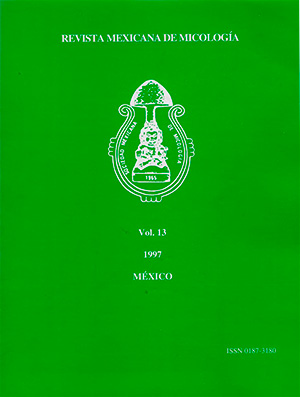Specialty mushrooms: consumption, production and cultivation
DOI:
https://doi.org/10.33885/sf.1997.3.857Keywords:
mushrooms, consumption, production, cultivationAbstract
Diversification of the mushroom industry, in terms of number and quantity of mushroom species cultivated,
has accelerated world-wide during the 1980's and 1990's. Twenty years ago, 70 percent of the world 's
mushroom supply was Agaricus bisporus. By the mid 1990's Agaricus bisporus accounted for only 37
percent of the world supply. Lentinu/a edodes (shiitake) and Pleurorus spp. (oyster mushroom) accounted
for 16.8 and 16.3 percent, respectively, of the world's production in 1994. The People's Republic of China is
the major producer (2,640,900 t - or 54 percent of the total) of cultivated mushrooms. Production and
consumption of specialty mushrooms in the USA and other western countries is expected to increase at an
accelerated rate in the years to come. The development of improved technology to cultivate each species
more efficiently, will allow consumer prices to decline. As economies improve in Latin America, production
of specialty mushrooms could increase at an even faster rate than in the United States. The culinary
advantages offered by specialty mushrooms bode well for the continued growth and development of the
specialty mushroom industry worldwide
Downloads
Downloads
How to Cite
Issue
Section
License
Copyright notice
Open access policy
The authors who publish in this journal accept the following conditions:
In accordance with copyright laws, Scientia Fungorum recognizes and respects the authors’ moral rights, as well as the ownership of property rights, which will be transferred to the journal for dissemination in open access. Scientia Fungorum does not charge for submission and processing of articles for publication.
All the texts published by Scientia Fungorum –with no exception– are distributed under a Creative Commons License Attribution-NonCommercial-ShareAlike 4.0 International (CC BY-NC-SA 4.0), which allows third parties to use the publication as long as the work’s authorship and its first publication in this journal are mentioned.
The authors can enter into independent and additional contractual agreements for the nonexclusive distribution of the version of the article published in Scientia Fungorum (for example include it into an institutional repository or publish it in a book) as long as it is clearly and explicitly indicated that the work was published for the first time in Scientia Fungorum.
For all the above, the authors shall send the form of Letter-transfer of Property Rights for the first publication duly filled in and signed by the author(s). This form must be sent as a complementary file.
This work is licensed under a Creative Commons Attribution-NonCommercial-ShareAlike 4.0 International license (CC-By-NC-SA 4.0).



